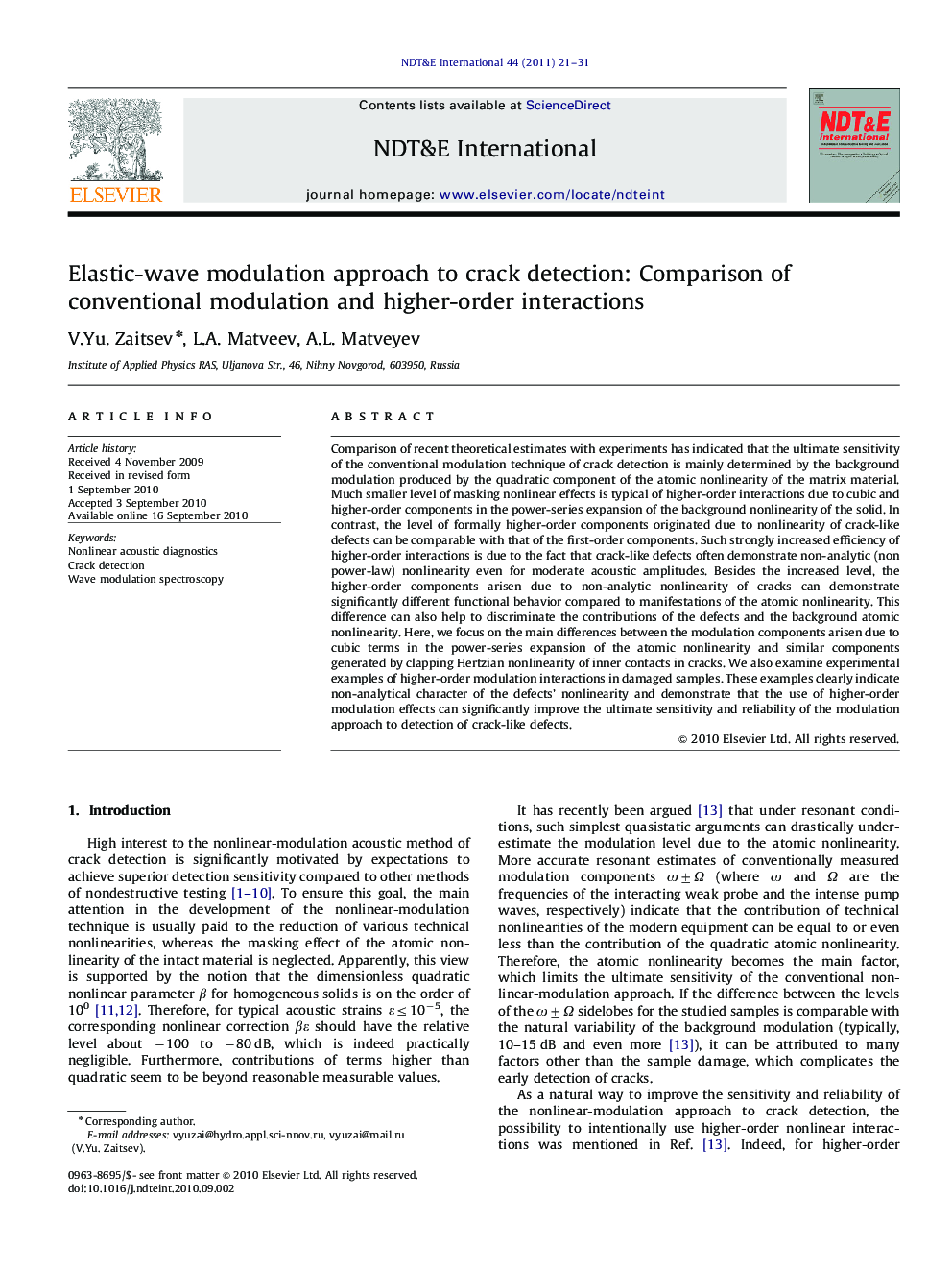| Article ID | Journal | Published Year | Pages | File Type |
|---|---|---|---|---|
| 295522 | NDT & E International | 2011 | 11 Pages |
Comparison of recent theoretical estimates with experiments has indicated that the ultimate sensitivity of the conventional modulation technique of crack detection is mainly determined by the background modulation produced by the quadratic component of the atomic nonlinearity of the matrix material. Much smaller level of masking nonlinear effects is typical of higher-order interactions due to cubic and higher-order components in the power-series expansion of the background nonlinearity of the solid. In contrast, the level of formally higher-order components originated due to nonlinearity of crack-like defects can be comparable with that of the first-order components. Such strongly increased efficiency of higher-order interactions is due to the fact that crack-like defects often demonstrate non-analytic (non power-law) nonlinearity even for moderate acoustic amplitudes. Besides the increased level, the higher-order components arisen due to non-analytic nonlinearity of cracks can demonstrate significantly different functional behavior compared to manifestations of the atomic nonlinearity. This difference can also help to discriminate the contributions of the defects and the background atomic nonlinearity. Here, we focus on the main differences between the modulation components arisen due to cubic terms in the power-series expansion of the atomic nonlinearity and similar components generated by clapping Hertzian nonlinearity of inner contacts in cracks. We also examine experimental examples of higher-order modulation interactions in damaged samples. These examples clearly indicate non-analytical character of the defects’ nonlinearity and demonstrate that the use of higher-order modulation effects can significantly improve the ultimate sensitivity and reliability of the modulation approach to detection of crack-like defects.
